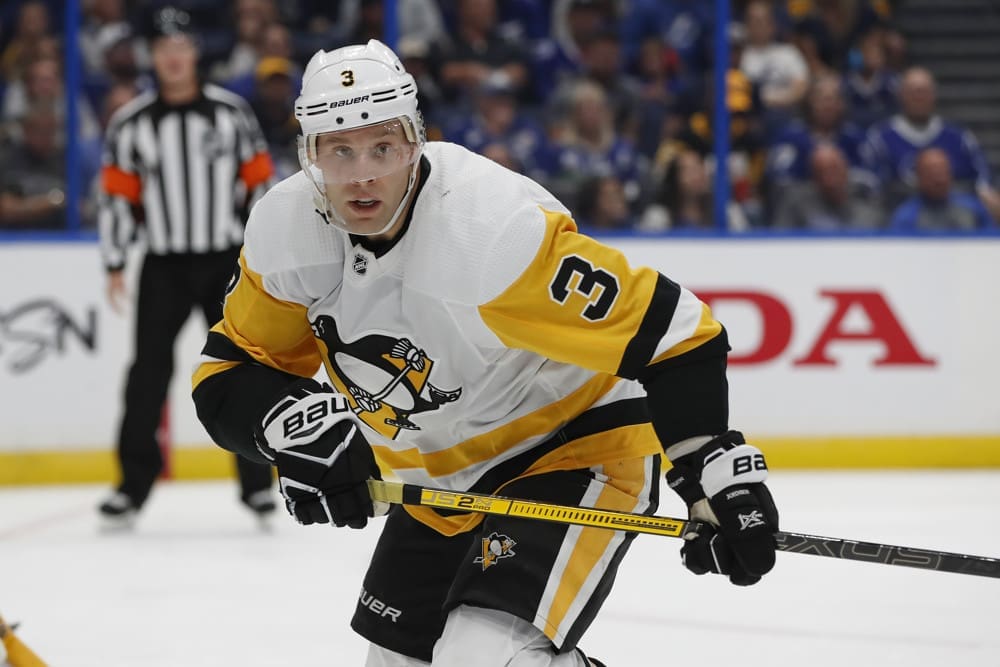Penguins
Penguins Free Agency: Capology, Needs & Expendable Veterans

The NHL free agent frenzy begins in 17 days on Oct. 9. It’s neither a buyer’s nor seller’s market, but instead, unrivaled chaos in which every team is up against the real or an internal salary cap and has needs and players who don’t fit the budget. The Pittsburgh Penguins are no different, and another Penguins trade to clear more salary matches the desperation as sands in their championship hourglass quickly run out.
The Penguins believe their championship window is still open, but closing quickly. The urgency to squeeze one more Stanley Cup led GM Jim Rutherford to spend his first-round pick (15th overall) to acquire winger Kasper Kapanen.
And so the coming frenzy will be the most important in the Penguins franchise since the post-lockout shopping spree in 2005. The 2005 results were so disastrous they cost GM Craig Patrick his job. Rutherford is unlikely to go hog wild on the free-agent market, but for the Penguins to be active in just over two weeks, more veterans must go.
Departing veterans are the unfortunate consequence of losing. Freeing up cash will be necessary to spend those resources on new bodies, attitudes, and abilities.
Assuming Rutherford keeps a cushion for callups due to injury, and goalie Tristan Jarry signs in the $3 million range, the Penguins currently have about $1.4 million in salary-cap space. If the Penguins hope to be active in free agency, at least one veteran will be part of a surprise Penguins trade.
When doing the math, we must factor replacement costs, as well as cap space cleared. For example, if a player makes $5 million to be a top-six winger, the Penguins must factor the replacement cost.
Pittsburgh Penguins Need: Third-Pair Defenseman, Cost $4 million – 5.5 million.
A third-pairing defenseman not on his last legs or in need of reclamation will cost at least $4 million. Think of Ian Cole. Sami Vatanen, Chris Tanev, Travis Hamonic, and Justin Braun are right-side defensemen in that salary range, plus or minus a few toonies.
Pittsburgh Penguins Trade: Expendable Veterans
1. Patric Hornqvist
At the beginning of the offseason, we would have been shocked by a Hornqvist trade. The battling Swedish winger is a ball of energy and fight; he is everything the Pittsburgh Penguins desperately need.
However, as the Penguins cast their eyes towards free agency, his is the large salary that would facilitate those gets.
What makes Hornqvist expendable? Both his large salary and Brandon Tanev, who could easily slide to a third-line RW role. Tanev does not have anything resembling Hornqvist’s offensive capabilities, but he brings many of the same intangibles. With an offensive push by the third-line center, Tanev could create space and havoc, which balances the loss of finish.
Potential savings after replacement cost: $4 million
It would be much easier to find a fourth-line RW in the free-agent bargain bin. Dominik Simon could also handle these duties and add some offense on the third or fourth line when Simon is healthy this winter.
At the urging of several readers, we must note Hornqvist has a no-trade clause, so he would get a say in any potential movement (but that doesn’t really change the above math or the Penguins situation).
2. Jack Johnson
PHN and this writer have been one of the few voices willing to balance the vociferous group, which opposes Jack Johnson being allowed to play hockey. However, what makes Johnson expandable is his $3.25 million salary and the Penguins’ depth at LD. They have Juuso Riikola ready to play, and the Penguins have top prospect P-O Joseph who will soon push for playing time on the left side.
Johnson is a solid defender, and if you add up all of the goals scored against the Penguins with Johnson on the ice and compare them to all of the goals scored by the Penguins, the difference is a minus-1. Johnson’s PK work also earns distinction.
Potential Savings after replacement costs: $2 million. The difference between Riikola and Johnson is $2 million, but a potential Penguins trade would likely include a salary holdback, too.
If not Johnson, Marcus Pettersson could be the surprise Penguins trade. Johnson makes Pettersson expendable because Johnson could easily play the 18 or 22 minutes required of the second pairing, and already meshed well with right-side defenseman John Marino.
Trading Pettersson, who had an average 2019-20, would clear about $4 million as Johnson and Riikola as the second and third pairing LDs would cost well less than Pettersson and Johnson.
3. Long Shots
If you think including Jason Zucker on this list is a reach, you are correct. The next whisper or rumbling that Zucker could be a part of a Penguins trade would be the first. By all accounts, the Penguins will use Zucker in their top-six, but he does make $5 million, and the Penguins have 2019 top pick, Sam Poulin, on the way.
Perhaps that makes more sense at mid-season if the proper stars align.
Bryan Rust and Brian Dumoulin are the other veterans who make several million dollars, but both have a value that outpaces their salary. Solid top-pairing defensemen and 27-goal scorers cost more than $4 million and $3.5 million, respectively.
So, for the Penguins to be active in free agency, Patric Hornqvist is likely goner. But, remember, it first takes a Penguins trade partner, too. It’s going to be a wild few weeks, and we will more likely be surprised if the Penguins do seek change.












